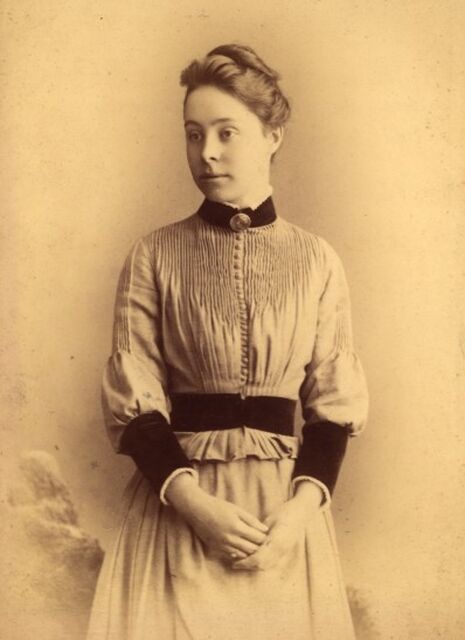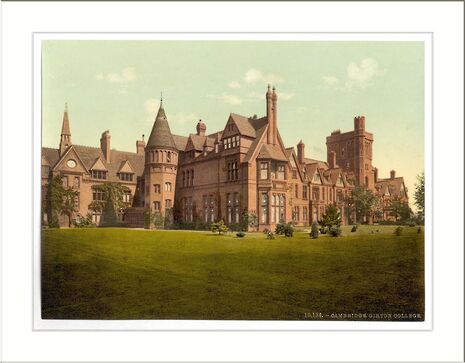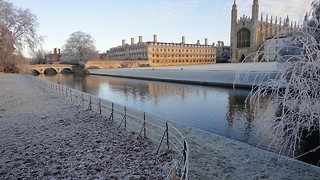800 editions: on feminism and smashing the rose-tinted window
This term’s Features Editor asks: how much has Cambridge changed since 1947?

The 800th edition of Varsity drew near and it was all hands on deck. Scrabbling through the decrepit archives dating back to April 1947, we had high hopes of finding celebratory pieces commemorating nearly 70 years of student journalism. Revelling became stilted as it soon became clear that Varsity’s coverage of women’s rights held a far murkier past than first thought. To the extent that a moment of ‘reflection’ as opposed to ‘commemoration’ feels more appropriate, this forces us to consider the question: “how far have we actually come?”
The move for women’s higher education began with suffragist Emily Davies establishing Girton College in 1869, soon followed by Newnham two years later. Despite studying in Cambridge, the female undergraduates were by no means considered equal to their male counterparts. Even Philippa Fawcett topping the Mathematical tripos as early as 1890 received little attention except a second-class mark and no official degree. For the next 80 years, female scholars lobbied and fought for women’s right to a Cambridge degree, while simultaneously suffering ridicule, heckling and even the burning of effigies of women from windows in 1897. Varsity’s coverage from 1947 reflects the often immature and misogynistic attitude to women, characteristic of the male Cambridge undergraduates of the time.
Perhaps one reason for this was Varsity’s overwhelmingly male demographic, with the first female editor elected only in Lent 1966, though this is likely a reflection of Cambridge academia’s treatment of women as ‘second-class’ more generally. Either way, the atmosphere faced by women on a daily basis was a disturbing one, where they were both sexualised and belittled. Varsity played an integral role as any in perpetuating this, with their “Girl of the Week” feature, and coined catchphrases such as, “Girton won’t, Newnham might, New Hall will and Homerton will with pleasure”, as written in the 1977 freshers’ guide. The aggressive critique of women’s appearances was blatant in Varsity’s first 1961 ‘Women in Cambridge’ supplement, where the author suggested that “they should smarten up, make themselves more attractive to look at”. Varsity embraced any opportunity to show both their own, and Cambridge’s, discomfort in the presence of women. One such article from 1968 stated the changing ratio was “blamed for increased suicides”. Airs of animosity and predation flowed between the two genders. One female student described the strangeness of being:
“..simultaneously despised and sought after. Many [men] deny women’s intellectual abilities and yet are nervous of their cleverness; they want women, yet don’t want to see more women as members of the university”

By 1973, co-residence was becoming the norm as opposed to exception and Varsity’s attitude towards and coverage of women started to change. It was still not fully rid of its sexist tendencies, with sporadic attacks on the feminist movement through “letters to the Editor: feminist nonsense”. Eventually, Varsity joined forces with ‘Reclaim the Night’ marches and the Women’s Liberation Group to expose issues of harassment and assault, becoming a medium to publicise just how prolific sexual harassment was through the nineties and noughties.
As the pilfering through the archives draws to a close, the taste in my mouth is one of sour attempting to turn sweet. Gender and academia are two forces in perpetual conflict, though this conflict has become somewhat covert in the last decade or so. A sheen of equality covers the true statistics: women make up 45 per cent of the academic workforce but hold only 20 per cent of professorships; CUSU’s last sexual harassment report revealed 77 per cent of female students experience harassment; 91 per cent of fresher historians receiving firsts in 2015 were male. Even more recently, the avid opposition to the Trinity breakfast celebrating 40 years of women at the college, reveals naivety around how much of a slog it has been for women to get where they are now, and how much further is left to go. Taken individually, these facts are often dismissed, but when shoved together, they reveal the extent to which we still live and work in a university furrowed with inequality. It is up to Varsity to lighten its murky past by picking apart the fact from the false, exposing degrees of inequality and smashing the rose-tinted window.
 Comment / Anti-trans societies won’t make women safer14 November 2025
Comment / Anti-trans societies won’t make women safer14 November 2025 Fashion / You smell really boring 13 November 2025
Fashion / You smell really boring 13 November 2025 Features / Beyond the Pitt Club: The Cambridge secret societies you have never heard of16 November 2025
Features / Beyond the Pitt Club: The Cambridge secret societies you have never heard of16 November 2025 News / Pembroke flood damage forces ‘costly’ repairs17 November 2025
News / Pembroke flood damage forces ‘costly’ repairs17 November 2025 News / University opens new sports pitch15 November 2025
News / University opens new sports pitch15 November 2025









